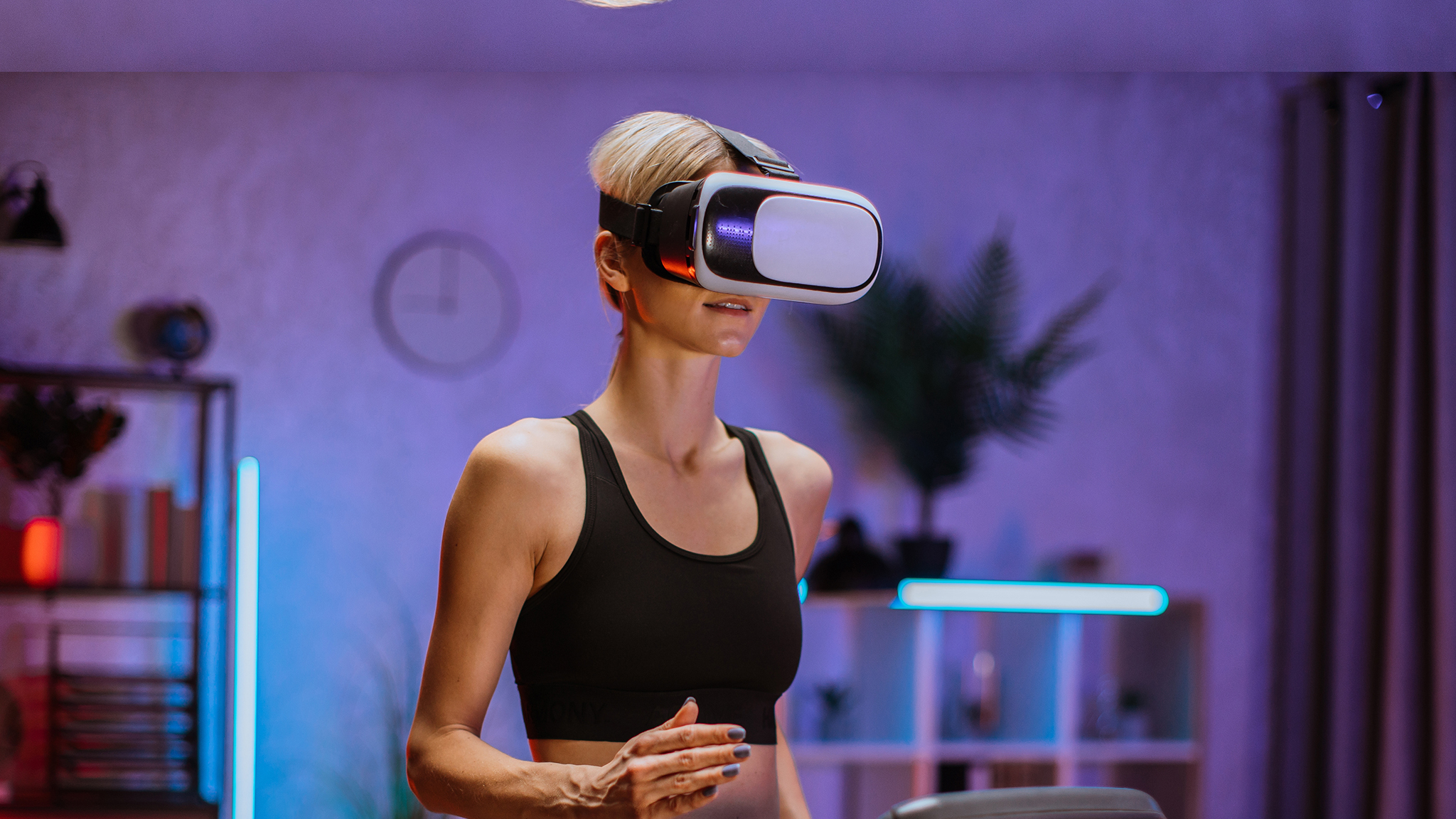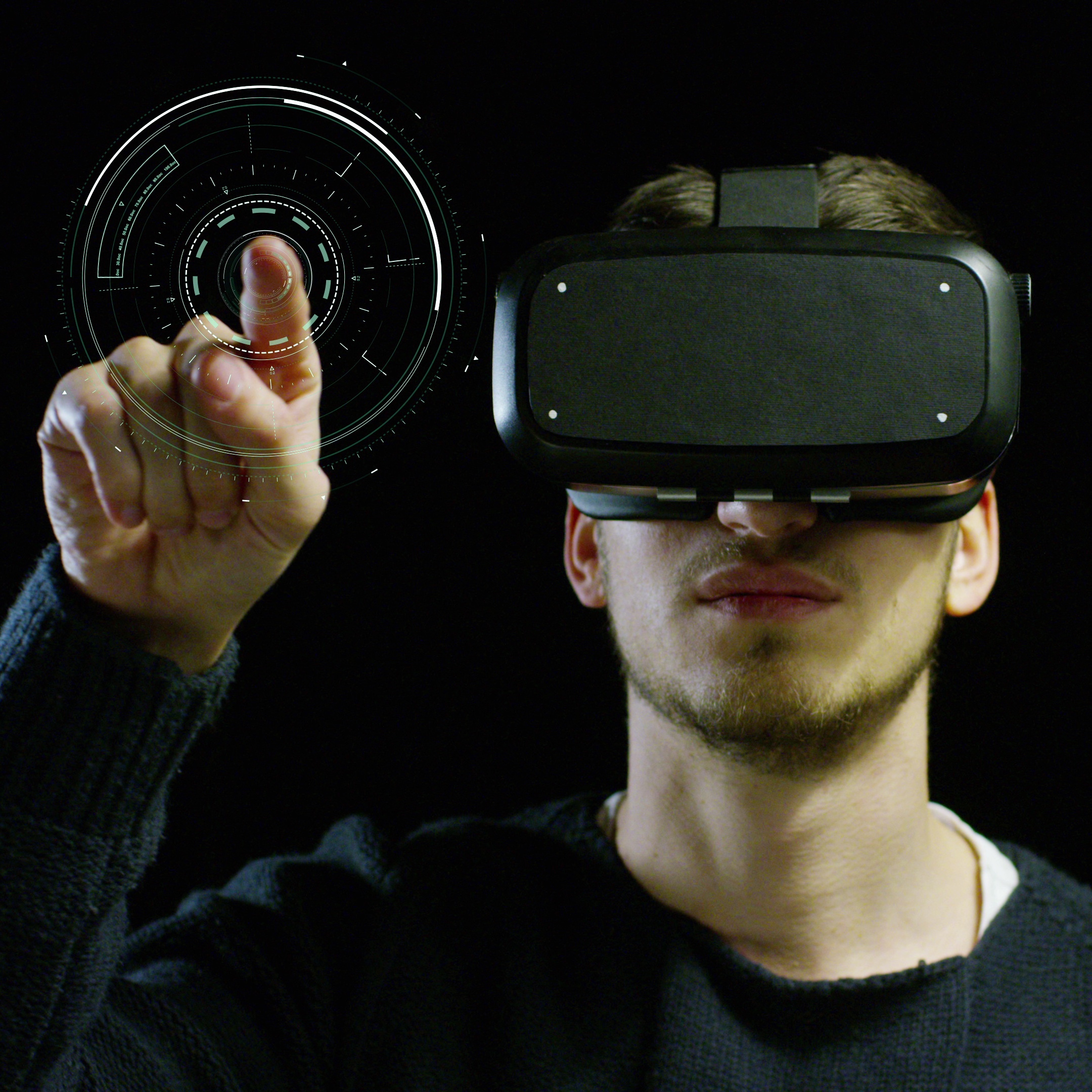VR Locomotion Is Taking Immersive Experiences to a New Level. Here’s How.
The buzz around VR technology rests upon the fact that it brings rich experiences and destinations around the world right into your living room, without the need to actually travel (Psst: Have you read our blog on Virtual Tourism yet? It’s ideas galore; you’ll love it).
There’s a caveat, though — as fantastic as VR is, it’s not always able to capture the tactile experience of being somewhere. You are, after all, immobile, perched upon your couch. This could break the immersion.
But what if you could, while being visually and auditorily immersed, also physically move around in a virtual environment and explore it just like you would in real life? Like, really get off the couch and live the experience?
It’s possible, it’s happening right now, and it’s called VR locomotion!
So, what’s VR locomotion?
In VR, locomotion is like giving wings to the user experience. It enables moving from point A to point B in the digital realm, breathing life into virtualism. When Virtuality Group launched its range of arcade games and machines with VR experience as the critical offering way back in the 1990s, it essentially just had people seated on comfy chairs and, wearing goggles and lounging. But the project was a massive success that drew millions. Then, locomotion came, turning these passive viewers into active explorers. Not just through movement of the thumb over controllers, but whole bodies! Now, users can dodge, weave, and sprint through digital landscapes, making experiences like gaming feel thrillingly real.
The secret sauce? It’s a mix of elements like speed, acceleration, and user control, all garnished with top-notch visuals. Technologies like “Seamless-walk” use high-res sensors to map real-world strides into virtual steps. And get this: brain-computer interfaces are on the horizon, potentially letting us navigate VR with our thoughts alone. Cloud-based processing and volumetric VR are also spicing things up, making VR not just more immersive but also accessible.
In short, VR locomotion is transforming the virtual world from a static backdrop to a dynamic playground. It’s no longer just about seeing; it’s about doing, feeling, and interacting. As these technologies evolve, the line between the real and the virtual continues to blur, opening up a world of possibilities.
But how do you move in a VR locomotion setup?
This is where it gets super interesting.
There are a number of exciting ways to navigate a virtual environment physically. Let’s go over the ones most brands are investing in right now.
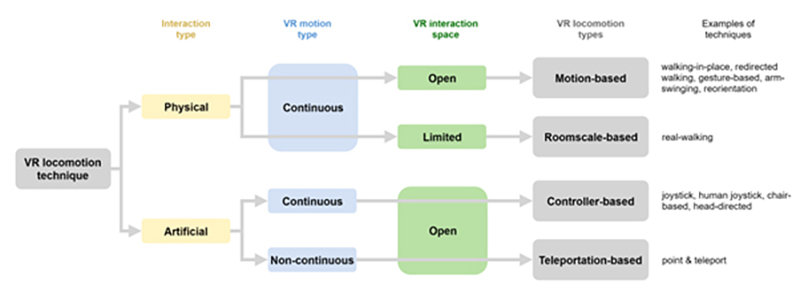
Teleportation-based locomotion
Teleportation is a widely used VR locomotion technique, mainly because it’s an excellent workaround for something called ‘VR sickness’ — your mind and body replicating symptoms of motion sickness when in a VR environment (yep, it’s a real thing!). Teleportation solves disorientation and nausea by taking away the need for users to constantly re-orient themselves in environments.
Initially developed as an early method to move within virtual environments, teleportation offers a unique blend of user comfort and simplicity. It’s particularly effective in seated VR experiences, such as those offered by Oculus Rift CV1 and PlayStation VR, where physical space and user mobility are limited.
However, the technology also has its limitations, including a less naturalistic experience and potential breaks in immersion, as we haven’t achieved finesse with mimicking real-world movement just yet.
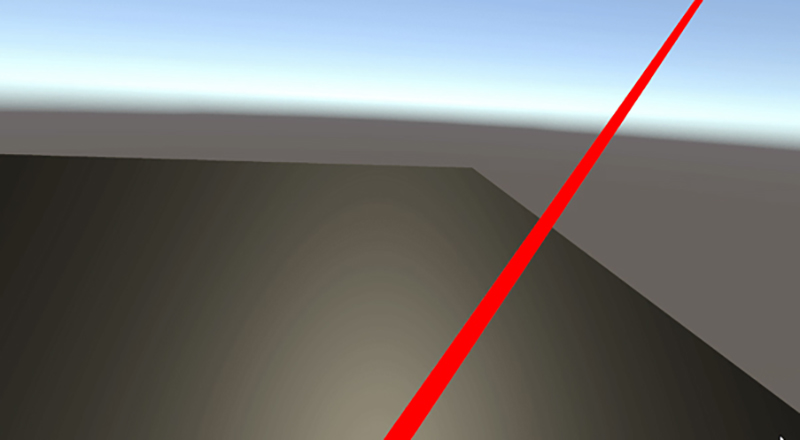
Source: Chase Mitchell – Medium
There are multiple techniques to ‘trigger’ teleportation in a virtual environment:
- • Point and teleport, where you select a destination by pointing at it, hold the pose for a couple of seconds, and teleport
- • Eye gaze is a hand-free way of teleporting by simply looking at your destination
- • Dash is where you dash towards your destination at super speed. Most dash teleportation techniques add some animation effects to minimize VR sickness
- • Blink, where your screen fades out and relocates you to your target destination – almost as if moving in a blink of an eye
- • Podoportation is where you use special shoes loaded with sensors to specify a teleportation destination
- • Third-person teleportation gives you an out-of-body VR experience from a third-person perspective
- • Multi-ray jumping, where a group of users can teleport together and navigate a virtual environment
Most of these techniques allow users to specify their orientation post-teleportation to minimize vestibular imbalance (VR sickness).
Movement-based locomotion
Movement-based locomotion is a technique that uses sensors to track user movements and replicate them in a VR environment as smoothly as possible.
Typically, such VR rigs use full-body tracking or hand-gesture tracking sensors to identify user movement and play them out in VR.
This is one of the more intuitive and natural locomotion methods for VR, though the risk of VR sickness increases significantly as users are subjected to more spatial disorientation.
Controller-based locomotion
This is one of the most familiar ways of navigating virtual reality, where users move around with the help of handheld controllers.
Controller-based locomotion has the widest applications in gaming, where giving users precise control over movement is essential.
Beyond gaming, we’ve seen controller-based locomotion used for educational purposes. E.g., navigating a monument replicated in VR.
Building controller-based locomotion is relatively more straightforward compared to other methods listed here since there’s little need for a massive sensor setup to drive immersion.
Room-scale based locomotion
Room-scale-based locomotion is similar to movement-based VR movement, where the system monitors user movements in a specified area and reflects them in the VR environment.
Room-scale VR movement is achieved via internal sensors built into headsets and external sensors located around the room. One of the leaders in this space is the HTC Vive and Oculus Rift products, which come with a set of sensors for users to create room-scale experiences.
But here’s the issue with this type of locomotion: you need ample space to actually facilitate such movements, which immediately rules it out for at-home VR experiences (you can’t have users bumping into furniture while moving from point A to B).
However, room-scale-based locomotion is fantastic for enterprise use cases, such as safety training, consumer research, and product testing (it works wonders for automotive products).
Pro-tip: When creating VR locomotion experiences, it’s always best to give users multiple locomotion options to enhance their experience.
What does the latest VR tech look like?
Since the first VR locomotion efforts about a decade ago, the technology involved has made massive strides in making experiences (way) more immersive. Below are some of the applications of VR that portray the accurate picture of VR tech today:
Omnidirectional treadmills
Omnidirectional treadmills are essentially 360-degree versions of your regular unidirectional workout machines.
Users can simply step onto a treadmill, put their headsets on, and explore VR environments with natural movement (usually with a harness to stay centred on the treadmill mechanically).
The biggest application? Gaming. Companies in the industry have built games designed explicitly for VR treadmills that offer infinitely more immersive experiences than just sitting on your gaming table with a controller.
But omnidirectional treadmills have far broader applications. The US military, for instance, uses these machines to conduct research and train soldiers in hyper-realistic scenarios.
Other applications include medical rehabilitation, human performance testing for athletes, and even project communication.
Cyber shoes
VR cyber shoes are essentially like strapping mini treadmills to your feet. While seated, you slide your feet along the ground to mimic walking or running in a VR environment.
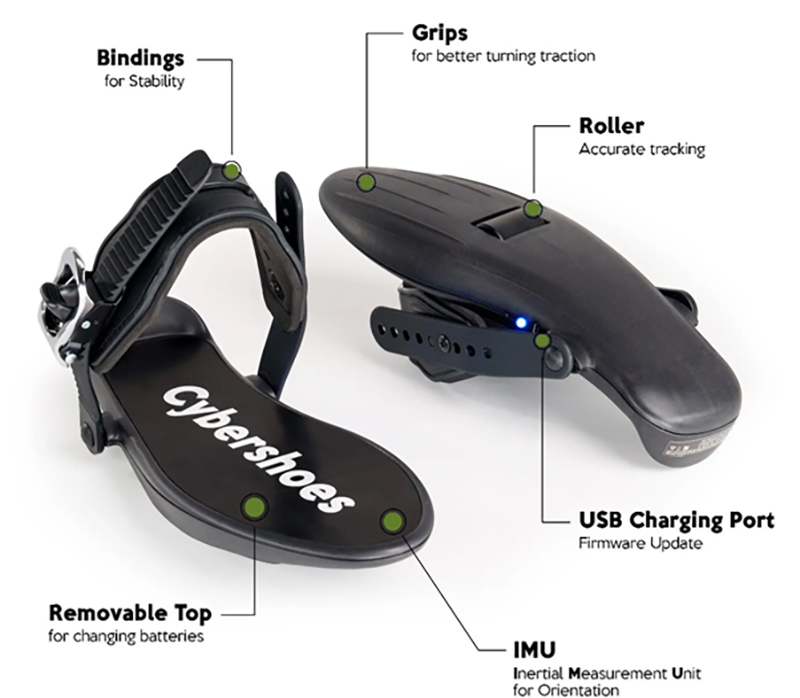
Cyber shoes are a clever way to combat VR-induced motion sickness. By syncing your physical movements with your virtual movements, they help keep your stomach settled. Plus, they’re space-efficient, which is excellent for smaller rooms.
However, the experience can feel a bit unnatural. After all, you’re seated and ‘walking’, which is a bit like trying to ride a bike without leaving the garage. There’s a learning curve to it.
Swivel chairs
These are high-tech chairs that track your body movements and are typically built for VR gaming applications.
Essentially, when you swivel or lean, your in-game character does the same.
These chairs add a nice touch of realism to your VR experience, especially for games that involve driving or flying. Plus, they’re kind of fun – who doesn’t enjoy a good spin in a chair?
The downside? Lack of full range of movement that you’d find in, say, a full-body VR tracker. Additionally, for games that require more physical activity, these chairs might feel a bit restrictive.
Exciting! But is there a future for VR locomotion?
100%.
Locomotion is perhaps the most natural evolution path for VR technology. This is evidenced by the tremendous advances in the space in the last decade. We’ve come from the first Oculus headset in 2010 to significantly more astounding technologies today.
Take MIT’s ‘Seamless-walk’ VR locomotion system built in 2023. It’s based on something called an ‘intelligent carpet,’ a surface loaded with sensors that capture high-res foot imprints in real-time as a user moves around. These imprints are then fed into an ML model that estimates the angle and movement of speed and adjusts the VR surface accordingly.
Another example is the VR hoverboard, prototypes of which have been built to vigorously combat the issue of VR sickness in conventional locomotion models.
Research literature on VR locomotion adoption and usability is also on the rise as new technologies emerge.
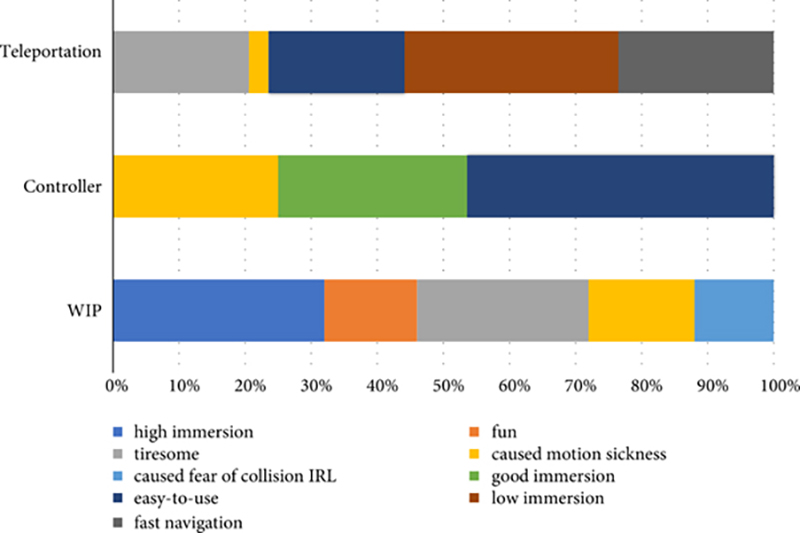
Research literature on user experience with different forms of VR locomotion, tracking different aspects of the VR experience.
Additionally, the biggest names in the space (Infinadeck, Virtuix, KATVR) are constantly innovating to improve the VR locomotion experience for users across use cases.
Developers and researchers are also coming up with ways to reduce latency, tracking accuracy, discomfort, and freedom of movement issues with existing VR technologies.
So, what’s next?
Innovations in VR extend to brain-computer interfaces, allowing users to control VR environments with their thoughts and the development of high-resolution 8K VR headsets for deeper immersion. The integration of 5G technologies promises expansive VR experiences, and advancements in AI and eye-tracking technologies are making VR environments increasingly realistic and responsive. VR locomotion is a cog in the wheel. The path forward in VR locomotion is marked by a commitment to stability, safety, and enhanced control, ensuring a more immersive and seamless digital user experience across domains.
Innovations in this space, coupled with rising user adoption and investment, signal a clear message: the future is immersive virtually as well as physically, and the time for enterprises to embrace this technology is now.
Read the next – Future Trend of Immersive Technology Without AR/VR Wearables.
